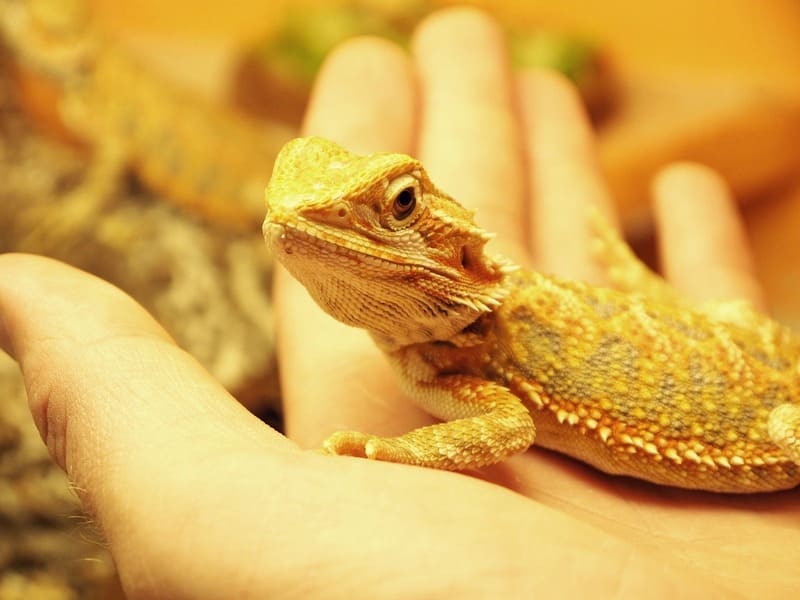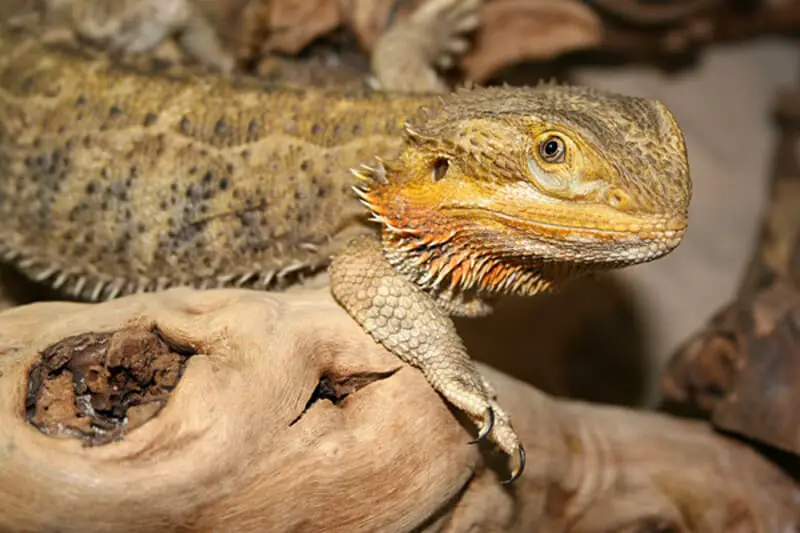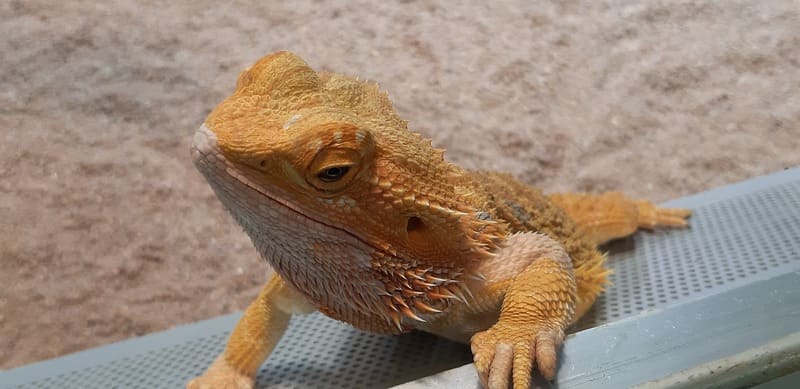Bearded dragons are among the most beloved and popular pet reptiles worldwide. Their docile nature, unique appearance, and relatively low maintenance make them an attractive choice for reptile enthusiasts. While they may not be as interactive as some other pets, such as dogs or cats, bearded dragons can engage in a form of play and social interaction with their owners. In this comprehensive guide, we’ll explore the concept of playing with bearded dragons, the methods to engage with them, and the benefits of interactive activities for both you and your pet.

Understanding Bearded Dragon Behavior
To effectively play and interact with bearded dragons, it’s crucial to understand their behavior and needs. Bearded dragons are relatively solitary animals in the wild, and their social behaviors are different from those of more social animals like dogs or cats. However, they can exhibit signs of recognition and respond positively to their owners’ presence.
1. Diurnal Nature
Bearded dragons are diurnal, which means they are primarily active during the day. They have a routine that includes basking to regulate their body temperature and periods of activity and rest. Their peak activity typically occurs during the morning and early afternoon.
2. Docile Temperament
Bearded dragons are known for their docile temperament, making them excellent pets for beginners and experienced reptile enthusiasts alike. They are generally more tolerant of handling than some other reptile species.
3. Display Behaviors
Bearded dragons exhibit various display behaviors, including head bobbing, arm waving, and the extension of their “beard.” These behaviors serve various purposes, such as communication with other bearded dragons or as part of their territorial and courtship displays. While these behaviors are not necessarily forms of play, they can be intriguing and engaging for owners to observe.
4. Sensory Perception
Bearded dragons have excellent sensory perception, including good vision and hearing. They can detect movement and changes in their environment, which can be part of their response to play and interaction.
5. Social Recognition
Bearded dragons can recognize their owners or caregivers. While they may not display overt affection like a dog, they can become accustomed to your presence and may respond positively to you through non-verbal cues, like approaching the front of their enclosure or becoming more alert.
Playing with Your Bearded Dragon
Playing with a bearded dragon may not involve the same interactive activities you would engage in with a dog or cat. Instead, it includes methods that cater to their natural behaviors and preferences. Here are several ways to play and interact with your bearded dragon:
1. Observing and Appreciating Behavior
Simply observing and appreciating your bearded dragon’s natural behaviors can be a form of interaction. Watching them bask, explore their enclosure, or display unique behaviors can be enjoyable and educational.
2. Gentle Handling
Bearded dragons are generally tolerant of being handled. To handle your pet, follow these guidelines:
- Wash your hands before and after handling to ensure cleanliness.
- Approach your bearded dragon calmly and avoid sudden movements.
- Lift them gently from below and support their body to minimize stress.
- Limit handling to short periods, especially if they seem uncomfortable or show signs of stress.
- Pay attention to your pet’s body language and respect their boundaries. If they display signs of agitation or discomfort, it’s best to put them back in their enclosure.
3. Bonding Time
Spending time with your bearded dragon can help build trust and establish a bond. Set up a comfortable space, such as a playpen or an area with secure boundaries, and allow your pet to explore. You can sit or lie down and interact with them while they explore the space. Use gentle petting or stroking to interact with your bearded dragon.
4. Hand-Feeding
Hand-feeding your bearded dragon is an excellent way to build a positive association with your presence. Offer small pieces of their favorite food (such as crickets or vegetables) from your hand. This interaction can help them associate you with positive experiences.
5. Providing Enrichment
Enrichment activities can engage your bearded dragon’s natural instincts and provide mental stimulation. Consider adding the following enrichment activities to their routine:
- Offering Safe Objects: Place safe, non-toxic objects in their enclosure for exploration, such as branches, rocks, or hiding spots.
- Mirror Play: Some bearded dragons may find mirrors intriguing. Placing a small, unbreakable mirror in their enclosure can stimulate their curiosity.
- Dangling Toys: Secure safe and non-choking hazard toys above their basking area for visual and physical stimulation.
- Climbing Opportunities: Bearded dragons enjoy climbing. Providing safe branches or rocks for them to climb on can be both fun and good exercise.
- Safe Digging Opportunities: Create a designated area filled with a safe substrate for digging. Bearded dragons may enjoy burrowing and excavating.
6. Bath Time
Many bearded dragons enjoy soaking in shallow, lukewarm water. You can provide a shallow basin filled with water and gently place your bearded dragon in it. Be sure to supervise them during bath time and never leave them unattended. This interaction can help keep your pet clean and provide a change of scenery.
7. Exploring Together
Allow your bearded dragon to explore your space while you supervise. Set up a secure area, remove potential hazards, and let your pet explore. This activity can be particularly enriching for your pet and allows them to discover new scents, textures, and stimuli.
8. Agility and Obstacle Courses
Bearded dragons are capable of navigating obstacle courses with appropriate setup. You can create a mini obstacle course with items like tunnels, small ramps, and platforms. Allow your bearded dragon to explore the course while you monitor their progress. This activity provides mental and physical stimulation.

Benefits of Playing with Bearded Dragons
Playing and interacting with your bearded dragon can be rewarding for both you and your pet. Here are some of the benefits of engaging with your bearded dragon:
1. Bonding and Trust
Regular interaction and gentle handling can help build trust and a strong bond between you and your bearded dragon. This trust can lead to a more enjoyable and enriching relationship.
2. Mental Stimulation
Interactive activities and enrichment provide mental stimulation for your pet. Bearded dragons are curious and intelligent reptiles, and engaging their minds with various activities can prevent boredom.
3. Physical Exercise
Exploring, climbing, and navigating obstacle courses can provide physical exercise for your bearded dragon. Physical activity is essential for their health and well-being.
4. Social Interaction
Even though bearded dragons are solitary by nature, they can become accustomed to human presence and enjoy social interaction. These interactions can help keep them mentally and emotionally stimulated.
5. Reduction of Stress
Positive interactions and engagement can reduce stress in your bearded dragon. This is especially important for newly acquired or shy bearded dragons, as they may become more comfortable with your presence over time.

Safety and Considerations
While playing with your bearded dragon can be enjoyable and beneficial, it’s essential to keep safety in mind. Consider the following safety guidelines:
1. Wash Your Hands
Before and after handling your bearded dragon, wash your hands thoroughly to prevent the potential transmission of bacteria. This is important for both your safety and the well-being of your pet.
2. Respect Their Boundaries
Bearded dragons have individual personalities and preferences. Pay attention to their body language and behavior to respect their boundaries. If they show signs of discomfort or stress, it’s best to allow them to return to their enclosure.
3. Supervision
Always supervise your bearded dragon during play and interaction. This is especially crucial when they are exploring new environments or participating in activities like obstacle courses.
4. Safe Enrichment
Ensure that any objects or items introduced into your bearded dragon’s enclosure for enrichment are safe and non-toxic. Avoid items that could pose a choking hazard or cause injury.
5. Avoid Overhandling
Be mindful not to overhandle your bearded dragon, as excessive handling can lead to stress. Short, positive interactions are often more beneficial than extended periods of play.
6. Be Gentle
Handle your bearded dragon gently and avoid sudden movements. This approach helps reduce stress and ensures their comfort during interaction.
Conclusion
Playing with a bearded dragon involves understanding their unique behaviors and preferences and engaging in activities that cater to their needs. While bearded dragons may not interact in the same way as more social animals like dogs or cats, they can enjoy and benefit from gentle handling, enrichment activities, and exploration.
By spending time with your bearded dragon and respecting their boundaries, you can build a strong bond and provide mental and physical stimulation for your pet. Playing and interacting with your bearded dragon can be a rewarding and enjoyable experience that contributes to their well-being and your own enjoyment as a reptile owner.
